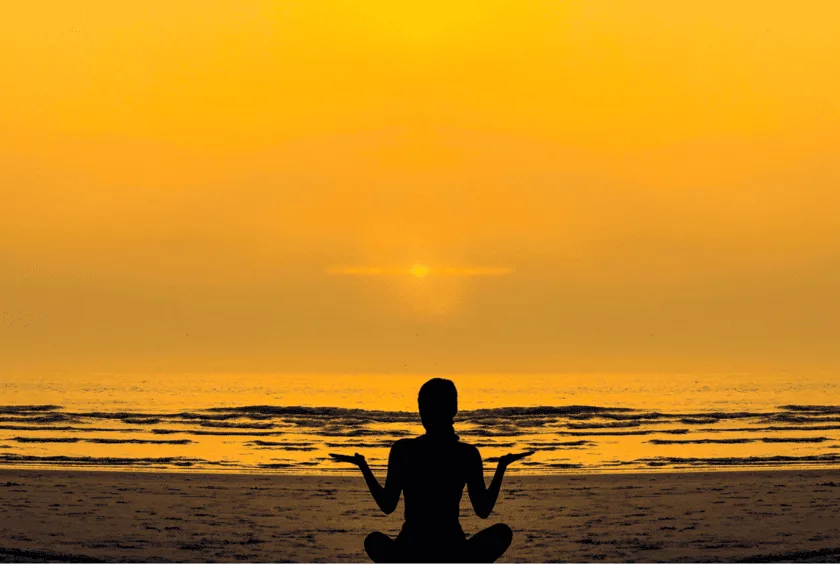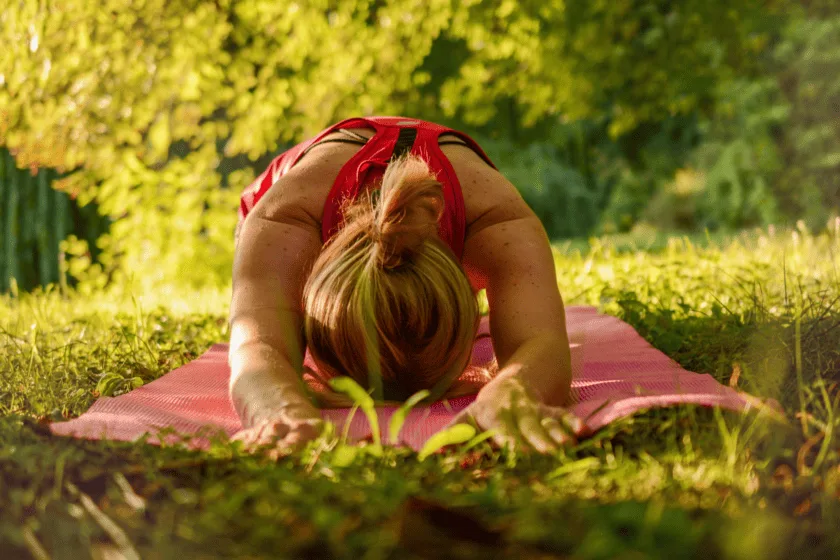Introduction to the 7 Spiritual Laws of Success
In a world that glorifies hustle, productivity, and instant gratification, it’s easy to feel disconnected from what truly matters. We chase success, yet often find ourselves drained, overwhelmed, or unfulfilled—even when we achieve our goals. 7 Spiritual laws of success offer a different path, one that aligns our actions with universal principles of harmony, purpose, and flow. These laws aren’t about rigid rules; they’re about recognizing the deeper intelligence that governs life itself.
Consider this: when you plant a seed, you don’t dig it up daily to check its progress. You trust the natural laws of growth. Similarly, spiritual laws remind us that true success isn’t forced—it’s cultivated. In a society drowning in noise and urgency, these principles ground us, helping us navigate challenges with clarity and grace.
How These Principles Simplify Success and Well-Being
The 7 Spiritual Laws of Success aren’t just philosophical ideas—they’re practical tools. Here’s how they cut through complexity:
- Effortless action: Instead of pushing against life, you learn to align with its natural flow.
- Clarity over clutter: They replace endless “how-to” lists with timeless wisdom.
- Holistic growth: Success isn’t just about wealth or achievement—it’s about joy, connection, and inner peace.
“When you understand spiritual laws, you stop swimming upstream. Life becomes less about struggle and more about synchronicity.”
These laws demystify success by showing that fulfillment isn’t found in external validation, but in living authentically. Whether you’re overwhelmed by choices, stuck in burnout, or simply seeking a more meaningful way forward, these principles offer a compass—one that works even when life feels chaotic.
The Law of Pure Potentiality
Understanding Your Infinite Potential
The first of the 7 spiritual laws of success: At the core of the Law of Pure Potentiality lies the understanding that you are, by nature, a being of infinite possibilities. This law reminds us that your true essence is pure consciousness—a field of limitless creativity, intelligence, and potential. Yet, in the hustle of daily life, it’s easy to forget this truth. You may feel constrained by responsibilities, societal expectations, or self-doubt, but these are merely illusions that obscure your boundless potential.
To reconnect with this infinite potential, start by recognizing that you are not defined by your circumstances, past experiences, or external achievements. Instead, you are the source of all possibilities, capable of creating, transforming, and manifesting your deepest desires. This realization is the first step toward unlocking your true power.
Practical Ways to Tap into Creativity and Stillness
Accessing your pure potentiality requires a balance between creativity and stillness. Here are some practical ways to cultivate both:
- Practice Daily Meditation: Spend 10–15 minutes each day in silence, focusing on your breath or a mantra. This practice helps quiet the mind and connect you to your inner source of creativity.
- Embrace Nature: Spend time outdoors, whether it’s a walk in the park or simply sitting under a tree. Nature has a way of grounding you and reminding you of your connection to the universe.
- Journal Your Ideas: Keep a notebook handy to jot down thoughts, inspirations, and creative ideas as they arise. This helps you tap into your subconscious mind and unlock new possibilities.
- Let Go of Judgment: Release the need to judge yourself or others. Judgment creates mental clutter, while acceptance opens the door to creativity and flow.
- Engage in Play: Allow yourself to engage in activities purely for joy, whether it’s painting, dancing, or playing a musical instrument. Playfulness is a gateway to creativity.
Remember, stillness is not about doing nothing—it’s about creating space for your true self to emerge. By integrating these practices into your daily routine, you’ll begin to align with the Law of Pure Potentiality and unlock the infinite possibilities within you.

The Law of Giving and Receiving
At its core, the Law of Giving and Receiving teaches us that life operates as a continuous flow of energy—what we give, we receive in return. This principle isn’t about transactional exchanges but rather about cultivating an open, generous spirit that invites abundance into every aspect of life. When we embrace generosity—whether through kindness, time, or resources—we align ourselves with the universe’s natural rhythm of circulation.
The Power of Generosity and Openness
Generosity isn’t just about material gifts; it’s a mindset. When we give freely, without expectation or scarcity thinking, we create space for more blessings to enter our lives. This could mean:
- Offering a listening ear to a friend in need,
- Sharing knowledge without holding back,
- Expressing gratitude openly, or
- Donating time or resources to a cause you believe in.
Openness, on the other hand, allows us to receive gracefully. Many of us struggle with accepting help, compliments, or opportunities due to guilt or unworthiness. Yet, the act of receiving is just as vital as giving—it completes the cycle of abundance.
“The universe responds to what you put out. Give joy, receive joy. Give love, receive love. The flow is endless when you trust it.”
Simple Daily Practices to Cultivate Abundance
Integrating the Law of Giving and Receiving into your daily routine doesn’t require grand gestures. Small, intentional acts can shift your energy and mindset over time. Try these effortless yet powerful practices:
- Start with gratitude: Each morning, silently thank the universe for three things you’re grateful for—this primes you to receive more.
- Give without attachment: Offer a smile, a kind word, or a small favor without expecting anything in return.
- Receive mindfully: When someone offers help or a compliment, pause and say, “Thank you, I accept this with joy.”
- Practice silent blessings: Mentally wish strangers well as you pass them—this subtle act strengthens your generosity muscle.
Remember, abundance isn’t just about wealth—it’s about fulfillment, connection, and joy. The more you participate in the dance of giving and receiving, the more naturally it unfolds in your life.
The Law of Karma (Cause and Effect)
Every choice you make—whether big or small—shapes your future. The Law of Karma teaches us that actions have consequences, and by becoming more conscious of our decisions, we can create a life filled with purpose, joy, and fulfillment. This isn’t about rigid rules or fear of “getting it wrong.” Instead, it’s an empowering reminder that you hold the power to design your destiny, one mindful step at a time.
How Your Actions Shape Your Future
Think of karma as the universe’s way of reflecting your energy back to you. Every thought, word, and deed plants a seed that will eventually bear fruit. For example:
- Kindness begets kindness – Small acts of compassion ripple outward, often returning to you when you least expect it.
- Negativity fuels more negativity – Complaining or blaming others keeps you stuck in cycles of frustration.
- Effort leads to growth – Consistent, intentional actions—even tiny ones—compound into meaningful change.
This isn’t about perfection. It’s about awareness. When you recognize that your daily habits are quietly scripting your tomorrow, you begin to make choices that align with the life you truly want.
Making Conscious Choices for Positive Outcomes
You don’t need hours of free time or a complete life overhaul to work with karma. Start small:
“Before speaking, ask: Is it true? Is it necessary? Is it kind? Before acting, ask: Will this bring peace or chaos—to myself and others?”
Here’s how to apply the Law of Karma in practical, everyday ways:
| Situation | Unconscious Reaction | Conscious Choice |
|---|---|---|
| A stressful workday | Snapping at a coworker | Taking three deep breaths before responding |
| Feeling overwhelmed | Mindlessly scrolling social media | Writing down one small step to tackle the challenge |
| A disagreement with a loved one | Blaming or shutting down | Listening first, then sharing feelings calmly |
The key? Pause before reacting. Even a brief moment of reflection can shift your trajectory from autopilot to intentional living. Over time, these mindful choices rewire your habits—and your future.

The Law of Least Effort
In a world that glorifies hustle and constant striving, the Law of Least Effort invites us to embrace a different way of being—one rooted in ease, flow, and trust. This principle teaches us that resistance and overexertion often create more obstacles, while surrender and alignment with life’s natural rhythm lead to effortless progress. It’s not about laziness but about working with life rather than against it.
Embracing Ease in Daily Life
Many of us have been conditioned to believe that success requires struggle—that if it doesn’t feel hard, we’re not doing enough. But the Law of Least Effort challenges this notion. Here’s how to cultivate ease in your daily routine:
- Listen to your body’s signals. Rest when tired, move when energized, and honor your natural rhythms instead of forcing productivity.
- Simplify decisions. Reduce decision fatigue by creating small routines (like meal prepping or a morning ritual) that free up mental space.
- Trust the process. Instead of micromanaging outcomes, focus on taking inspired action and letting go of the need to control every detail.
“Nature does not hurry, yet everything is accomplished.” — Lao Tzu
Letting Go of Resistance
Resistance shows up in many ways—procrastination, self-doubt, or clinging to outdated habits. The more we fight against what is, the more energy we waste. Here’s how to release resistance:
- Accept the present moment. Fighting reality only creates tension. Acknowledge where you are without judgment.
- Release the need to be right. Arguments, defensiveness, and rigid opinions drain energy. Choose peace over being right.
- Surrender attachments. Whether it’s a specific outcome or an old identity, clinging too tightly blocks flow.
The Power of Effortless Action
Effortless action (Wu Wei in Taoist philosophy) means acting without strain—like a river flowing around rocks. It’s the sweet spot between passivity and force. Try these practices:
| Action | How It Supports Least Effort |
|---|---|
| Prioritizing joy | When you follow what lights you up, motivation comes naturally. |
| Delegating | Ask for help or outsource tasks that drain you. |
| Pausing before reacting | A breath between stimulus and response reduces unnecessary friction. |
Remember, the Law of Least Effort isn’t about doing nothing—it’s about doing the right things with grace and alignment. When we stop swimming against the current, life carries us forward.
The Law of Intention and Desire
Setting Clear Intentions for Success
In the whirlwind of daily life, setting clear intentions can feel like an overwhelming task. Yet, it is one of the most powerful tools you can use to align your actions with your deepest desires. Intentions are not just goals; they are the conscious, purposeful energy you direct toward creating the life you envision. Start by asking yourself: What do I truly want to achieve? Whether it’s improving your health, finding inner peace, or advancing your career, clarity is key.
Here are some practical steps to help you set intentions effectively:
- Write down your intentions in a journal to give them tangible form.
- Frame them positively—focus on what you want to bring into your life, not what you want to avoid.
- Be specific. Instead of “I want to be healthier,” try “I intend to incorporate daily movement and nourishing meals into my routine.”
Aligning Your Goals with Universal Energy
Once your intentions are clear, the next step is to align them with the universal energy that surrounds us. This alignment is about trusting the natural flow of life and understanding that your desires are part of a greater whole. When your intentions are rooted in authenticity and positivity, they resonate with the universe’s energy, making it easier to manifest your dreams.
To align your goals with universal energy, consider the following practices:
- Spend a few moments each day in quiet reflection or meditation to connect with your inner self.
- Express gratitude for what you already have, as gratitude amplifies positive energy.
- Let go of rigid timelines and trust that the timing will be right when you’re in alignment.
“Intention is the starting point of every dream. It is the creative power that fulfills all of our needs, whether for money, relationships, spiritual awakening, or love.” — Deepak Chopra
Remember, the Law of Intention and Desire is not about forcing outcomes but about allowing your intentions to flow naturally in harmony with the universe. By setting clear intentions and aligning them with universal energy, you create a pathway for success that feels effortless and authentic.
The Law of Detachment
Trusting the Process Without Clinging to Outcomes
In a world that often demands immediate results, the Law of Detachment invites us to release our grip on specific outcomes and instead trust the journey. This doesn’t mean giving up on your goals or aspirations; rather, it’s about letting go of the need to control every detail. When we detach from the outcome, we create space for the universe to work in ways we might not have imagined. This can feel counterintuitive, especially when you’re used to planning every step, but it’s a powerful way to reduce stress and open yourself to new possibilities.
Here’s how you can start practicing this principle:
- Focus on the present moment: Instead of obsessing over the future, bring your attention to what you can do right now.
- Embrace flexibility: Be open to adjusting your plans as circumstances change.
- Release fear of failure: Understand that setbacks are part of the process and don’t define your worth or potential.

Finding Peace in Uncertainty
Uncertainty is an inevitable part of life, yet it’s often a source of anxiety and stress. The Law of Detachment teaches us to find peace in the unknown by accepting that we can’t control everything. This acceptance doesn’t mean you stop caring or taking action; it means you stop resisting the natural flow of life. When you let go of the need for certainty, you’ll find that life becomes lighter, and you’re able to navigate challenges with greater ease.
Consider these practices to cultivate peace in uncertain times:
- Practice mindfulness: Ground yourself in the present moment through meditation or deep breathing exercises.
- Shift your perspective: View uncertainty as an opportunity for growth rather than a threat.
- Trust your intuition: Listen to your inner guidance when making decisions, even if the path isn’t entirely clear.
By embracing the Law of Detachment, you’ll find that life becomes less about forcing outcomes and more about flowing with the rhythm of the universe. This shift can bring a profound sense of freedom and peace, even in the midst of life’s inevitable ups and downs.
Conclusion: Integrating the Laws into Everyday Life
Embarking on the journey to integrate the 7 Spiritual Laws of Success into your daily routine doesn’t require a complete overhaul of your life. Instead, it’s about taking small, intentional steps that align with these principles, creating a ripple effect of positive change. Here’s how you can start today and embrace progress over perfection.
Start Small, Start Today
Begin with one law that resonates most with you. For example, if the Law of Giving speaks to you, commit to performing one act of kindness daily—whether it’s a compliment, a helping hand, or a simple smile. Small actions build momentum and make the process feel manageable.
Create Daily Rituals
Incorporate these laws into your daily habits. For instance, practice the Law of Pure Potentiality by spending 5 minutes in meditation each morning. Or, apply the Law of Detachment by letting go of one worry before bed. Consistency is key, even if the steps seem minor.
Celebrate Progress, Not Perfection
Remember, this is not about achieving perfection but about making steady progress. If you miss a day or struggle with a particular law, be kind to yourself. Setbacks are part of the journey, and what matters is your willingness to start again.
Integrate Body, Mind, and Spirit
These laws are not just spiritual concepts—they’re tools for holistic well-being. For example, the Law of Dharma encourages you to align your work with your purpose, while the Law of Least Effort reminds you to conserve energy by focusing on what truly matters. Balance is the ultimate goal.
FAQs
- How do I know which law to start with?
- Choose the one that feels most relevant to your current challenges or goals. Trust your intuition—it’s often the best guide.
- What if I don’t see immediate results?
- Transformation takes time. Focus on the process, not the outcome. Small, consistent actions will yield results over time.
- Can I practice multiple laws at once?
- Absolutely! Once you feel comfortable with one law, you can gradually incorporate others. The key is to avoid overwhelming yourself.
By integrating these 7 spiritual laws of success into your life, you’ll not only enhance your well-being but also cultivate a deeper sense of purpose and fulfillment. Every step, no matter how small, is a step toward success. Start today, and let these principles guide you toward a more balanced and meaningful life.
Reference:
- Dunn, E. W., Aknin, L. B., & Norton, M. I. (2008). Spending money on others promotes happiness. Science, 319(5870), 1687-1688. https://doi.org/10.1126/science.1150952
- Anjali, & Dr. Rajat Kanti Mitra. (2022). Belief in Karma and Subjective Well-being among Adults. International Journal of Indian Psychȯlogy, 11(4). https://ijip.co.in/index.php/ijip/article/view/6444
- Ruth, M. (2025). Wu wei. EBSCO Research Starters: Religion and Philosophy. https://www.ebsco.com/research-starters/religion-and-philosophy/wu-wei





























